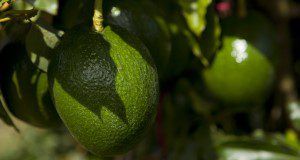Laurel wilt (LW) is a vascular disease caused by a fungal pathogen transmitted to avocado trees by several ambrosia beetle species and through root grafts among adjacent avocado trees. A critical part of preventing and controlling plant diseases is determining the causal agent so that the appropriate management practices can be implemented to eradicate or contain the outbreak. Proper sampling is a critical step in disease diagnosis and in the determination of the causal agent of disease. This new 3-page publication of the UF/IFAS Horticultural Sciences Department was written by Jonathan Crane, Romina Gazis, Jeff Wasielewski, Daniel Carrillo, Bruce Schaffer, Fredy Ballen, and Edward Evans.
https://edis.ifas.ufl.edu/hs1394
Tag: Bruce Schaffer
Recomendaciones para la Detección y Mitigación de la Marchitez del Laurel en Árboles de Aguacates y Especies Relacionadas en Jardines y Patios Hogareños
This is the Spanish translation of HS1358, Recommendations for the Detection and Mitigation of Laurel Wilt Disease in Avocado and Related Tree Species in the Home Landscape. Avocado trees are a popular choice for homeowners in Florida, with over 600,000 growing in Florida home landscapes. However, avocado trees as well as others in the Lauraceae family are susceptible to laurel wilt disease, which can kill a tree in as few as three weeks. This new 8-page publication of the UF/IFAS Horticultural Sciences Department provides home owners recommendations for identifying and mitigating laurel wilt disease in the home landscape. Written by Jonathan H. Crane, Jeff Wasielewski, Daniel Carrillo, Romina Gazis, Bruce Schaffer, Fredy Ballen, and Edwards Evans.
https://edis.ifas.ufl.edu/hs1384
Recommendations for the Detection and Mitigation of Laurel Wilt Disease in Avocado and Related Tree Species in the Home Landscape
Avocado trees are a popular choice for homeowners in Florida, with over 600,000 growing in Florida home landscapes. However, avocado trees as well as others in the Lauraceae family are susceptible to laurel wilt disease, which can kill a tree in as few as three weeks. This new 7-page publication of the UF/IFAS Horticultural Sciences Department provides home owners recommendations for identifying and mitigating laurel wilt disease in the home landscape. Written by Jonathan H. Crane, Jeff Wasielewski, Daniel Carrillo, Romina Gazis, Bruce Schaffer, Fredy Ballen, and Edwards Evans.
https://edis.ifas.ufl.edu/hs1358
AE456 Evapotranspiration-Based Irrigation for Agriculture: Crop Coefficients of Some Commercial Crops in Florida
AE456, a 4-page fact sheet by Isaya Kisekka, Kati W. Migliaccio, Michael D. Dukes, Jonathan H. Crane, and Bruce Schaffer, identifies typical Kc values for some of the crops commonly grown in Florida. Includes references. Published by the UF Department of Agricultural and Biological Engineering, January 2010.
http://edis.ifas.ufl.edu/AE456
AE457 Evapotranspiration-Based Irrigation Scheduling for Agriculture
AE457, a 6-page fact sheet by Isaya Kisekka, Kati W. Migliaccio, Michael D. Dukes, Jonathan H. Crane, and Bruce Schaffer, focuses on the main concepts related to ET-based irrigation scheduling and reviews the use of "smart" irrigation scheduling controllers for agricultural applications. Includes references. Published by the UF Department of Agricultural and Biological Engineering, January 2010.
http://edis.ifas.ufl.edu/AE457
AE458 Evapotranspiration-Based Irrigation for Agriculture: Implementing Evapotranspiration-Based Irrigation Scheduling for Agriculture
AE458, a 4-page fact sheet by Isaya Kisekka, Kati W. Migliaccio, Michael D. Dukes, Jonathan H. Crane, and Bruce Schaffer, outlines step-by-step procedures to follow when implementing a "smart" evapotranspiration (ET)-based irrigation schedule and a do-it-yourself irrigation schedule. Includes references. Published by the UF Department of Agricultural and Biological Engineering, January 2010.
http://edis.ifas.ufl.edu/AE458
AE455 Evapotranspiration-Based Irrigation for Agriculture: Sources of Evapotranspiration Data for Irrigation Scheduling in Florida
AE455, a 4-page fact sheet by Isaya Kisekka, Kati W. Migliaccio, Michael D. Dukes, Bruce Schaffer, Jonathan H. Crane, and Kelly Morgan, lists some of the public sources of ETo data for irrigation scheduling in Florida. Includes references. Published by the UF Department of Agricultural and Biological Engineering, January 2010.
http://edis.ifas.ufl.edu/AE455
ABE368/AE396 South Florida Tropical Fruit Grower Perspectives: Water Conservation Management Practices
Revised! ABE368, a 6-page fact sheet by Kati W. Migliaccio, Jonathan H. Crane, Edward Evans, Bruce Schaffer, Yuncong Li, and Rafael Muñoz-Carpena, presents results of fruit grower responses from a survey designed to assess changing views of agricultural producers in Miami-Dade county from 2006 to 2009 regarding water quantity and quality management practices — methods, demographics, water quality and quantity opinions concerning lifestyle, agriculture, and best management practices (BMPs). Includes references. Published by the UF Department of Agricultural and Biological Engineering, November 2009.
http://edis.ifas.ufl.edu/AE396

